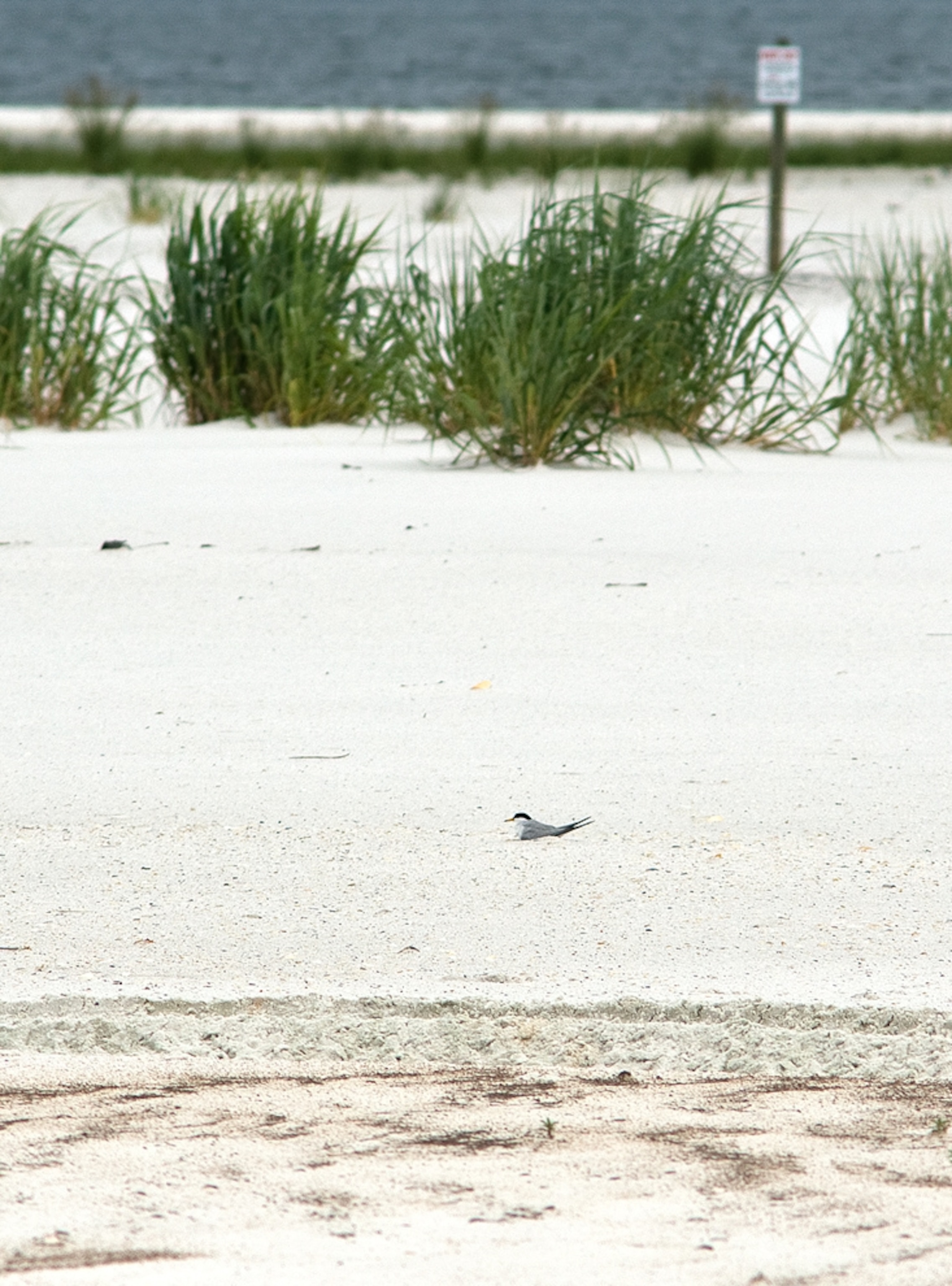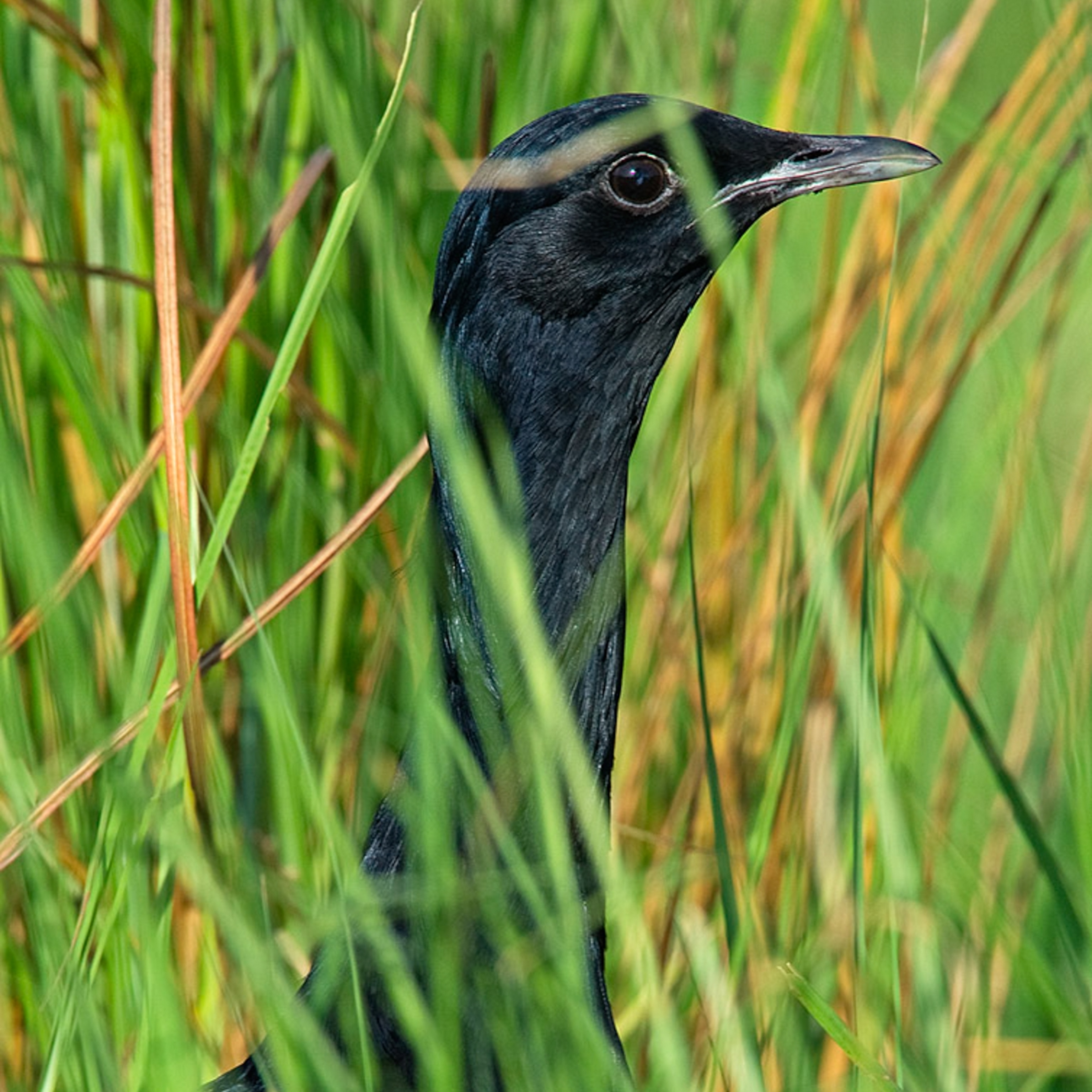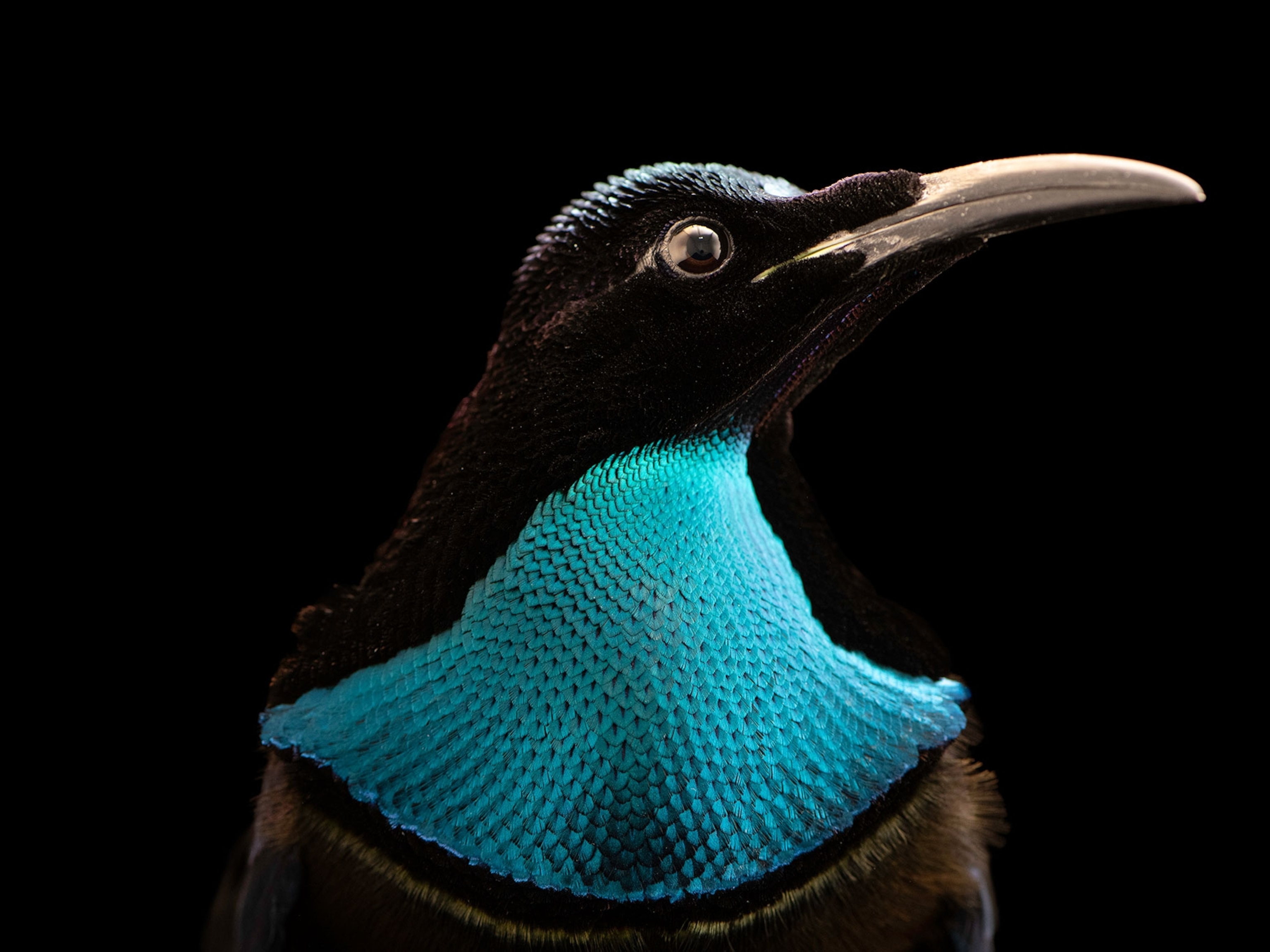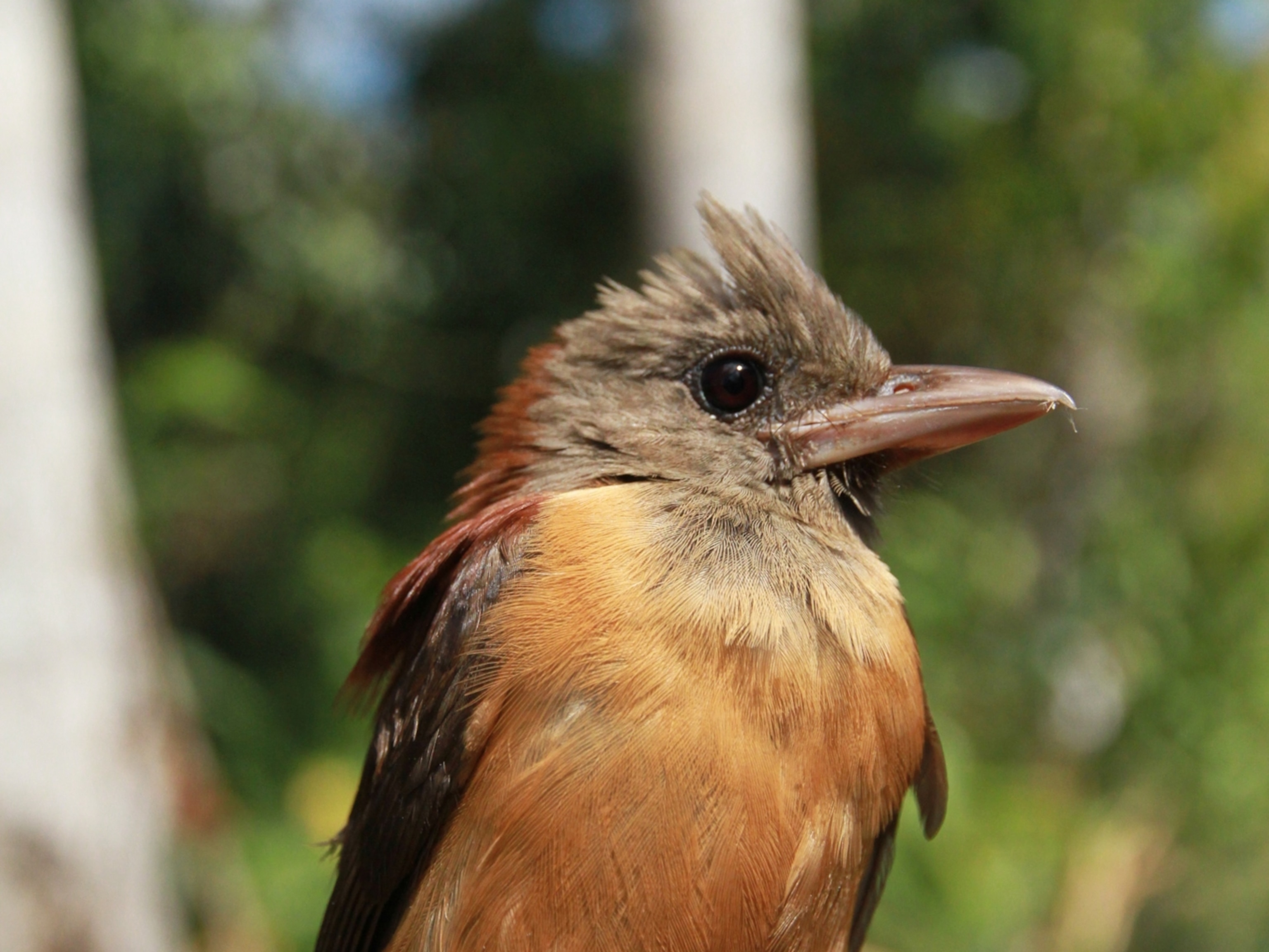
Gulf Oil Cleanup Crews Trample Nesting Birds
For rare shorebirds in the path of the Gulf oil spill, well-meaning cleanup crews may be doing more harm than the oil itself, experts say.
Part of an ongoing series on the environmental impacts of the Gulf oil spill.
Standing on a white-sand beach at Florida's Gulf Islands National Seashore Thursday, blotchy stains from the Gulf oil spill could be seen creeping past the red-lettered "keep out" signs meant to protect nesting shorebirds.
And, according to conservationists, some well-meaning cleanup crews who unknowingly walk into nesting habitat may be doing more harm than the oil itself, experts say.
From April to August each year, rare shorebirds such as the snowy plover and least tern lay nests of two to three eggs directly on the softly undulating, open dunes about 40 feet (13 meters) from the water's edge.
Snowy plovers and least terns are considered threatened in Florida. When nesting, both species' survival depends on limited contact with people.
But with oil encroaching on Florida's coasts, an army of cleanup crews has descended on the seashore. About 44,300 people are now de-oiling roughly 450 miles (720 kilometers) of Gulf coastline, according to the website for the Deepwater Horizon Unified Command, the joint federal-industry task force responding to the Gulf oil spill.
With so many people working so close to breeding grounds, frightened adult birds are abandoning their nests, and adults and chicks are being inadvertently trampled. (See "Gulf Oil Spill Pictures: Ten Animals at Risk.")
"Most of us know that the cleanup can do more damage than the oil could ever do," said Riley Hoggard, a resource-management specialist for Gulf Islands National Seashore (picture).
"Our bigger responsibility is to the [wildlife], whether it's to a turtle nest or nesting shorebirds. If we have to get cleanup teams off the beach, we'll do that—and deal with the oil cleanup later."
Birds Flushed, Cooked, Squashed During Cleanup
Oil on beaches is clearly a threat, since the toxic substance can affect shorebirds at all stages of their life cycles, Hoggard said. (Read "Oil-Coated Gulf Birds Better Off Dead?")
An oil-contaminated egg could have a higher likelihood of not hatching. And even if an egg does hatch, a curious chick could get mired in the sticky oil, which may kill the bird or hinder feather development, Hoggard said.
Deepwater Horizon Unified Command has sent assessment teams to monitor beaches and marshes and determine whether oil should be removed by hand—preferred in delicate regions such as the national seashore—or by heavy machines.
Each morning local conservation groups share information with BP's cleanup supervisors about where nesting colonies exist, as well as cautions about not trampling, driving through, or otherwise encroaching on these areas.
But even with precautions in place, there have been instances of cleanup crews disturbing nesting colonies, noted Melanie Driscoll, director of bird conservation for the National Audubon Society's Louisiana Coastal Initiative.
Eric Draper, executive director of Audubon of Florida, said many volunteers have inadvertently wandered into snowy plover nesting areas throughout the state.
"The responders' activities have been more threatening to shorebirds than the oil itself," Draper said.
Cleanup operations are most damaging when people "flush" nesting birds—frightening them enough to abandon their nests, the Gulf Islands' Hoggard said.
Crews first dispatched to the Fort Pickens area of the national seashore flushed many shorebirds, and some colonies have abandoned their nests, he noted.
Even a temporary flush—when the parents are frightened off but return soon after—can be disastrous.
Without a parent's belly to cool an egg, the embryo will literally get cooked in the Gulf Coast heat. Likewise, predators such as seagulls may swoop in to snag an unprotected egg or chick.
Increased foot and vehicle traffic have also harmed bird parents and chicks.
Losing even one parent will doom a nest, Hoggard said, since it takes two to raise a chick: one to keep the egg cool and safe and another to search for food.
New, handmade signs on the national seashore's main road implore drivers to watch out for skittering baby birds. Even so, at least one chick was run over on Thursday, according to Adrianna Hirtler, a public information officer for the park.
Gulf Sand Dwellers Also at Risk From Cleanups
Florida Audubon's Draper has begun recruiting volunteers in the state to act as "nesting-bird stewards," keeping nests safe from nearby cleaning crews.
But even cleanup operations farther from nesting sites can pose threats to Gulf shorebirds, said Joel Kostka, a microbial ecologist at Florida State University in Tallahassee.
Standing on a sun-baked Pensacola (map) beach Friday, Kostka surveyed a wide, compacted crater made by heavy machines used to scrape away about a foot (0.3 meter) of sand close to the water.
(See "Gulf Spill Pictures: Toxic Oil Found Just Under Beaches.")
Such techniques clear away oiled sand, but they may also permanently harm sand-dwelling animals, which shorebirds prey on, Kostka said.
"People generally think about beach environments as being dead to biology, and that's not at all the case," Kostka said.
Sun-shy ghost crabs swarm Gulf beaches at night. Small invertebrates such as mollusks and worms burrow in the sand, while thousands of microbe species feast on organic matter that the ocean washes ashore.
Members of these species may be killed outright by cleanup operations, and survivors are left with habitat that may never recover. For instance, certain species adapted to one type of sand—say, coarser particles—may die off if another type of sand replaces the lost layers.
Rather than digging deep, Kostka said, beach cleaners should simply pick up and remove oiled sand from the surface, wherever possible. There's also a chance that in some cases doing nothing will be the best approach.
Natural forces—such as oil-munching microbes—will degrade some oil buried in beach sand, and scientists are now working to figure out how fast and how completely Mother Nature will clean up what's there.
Gulf ecosystems were already in dire straits before the Deepwater Horizon oil spill, Kostka said. Years of coastal development have wiped out large chunks of beach habitat, and sea-level rise linked to global warming threatens to inundate even more of the coastline, he said.
"If you superimpose all of the [oil's] impacts on top of all those other threats to the ecosystems," Kostka said, "the oil may tip them over the edge."







